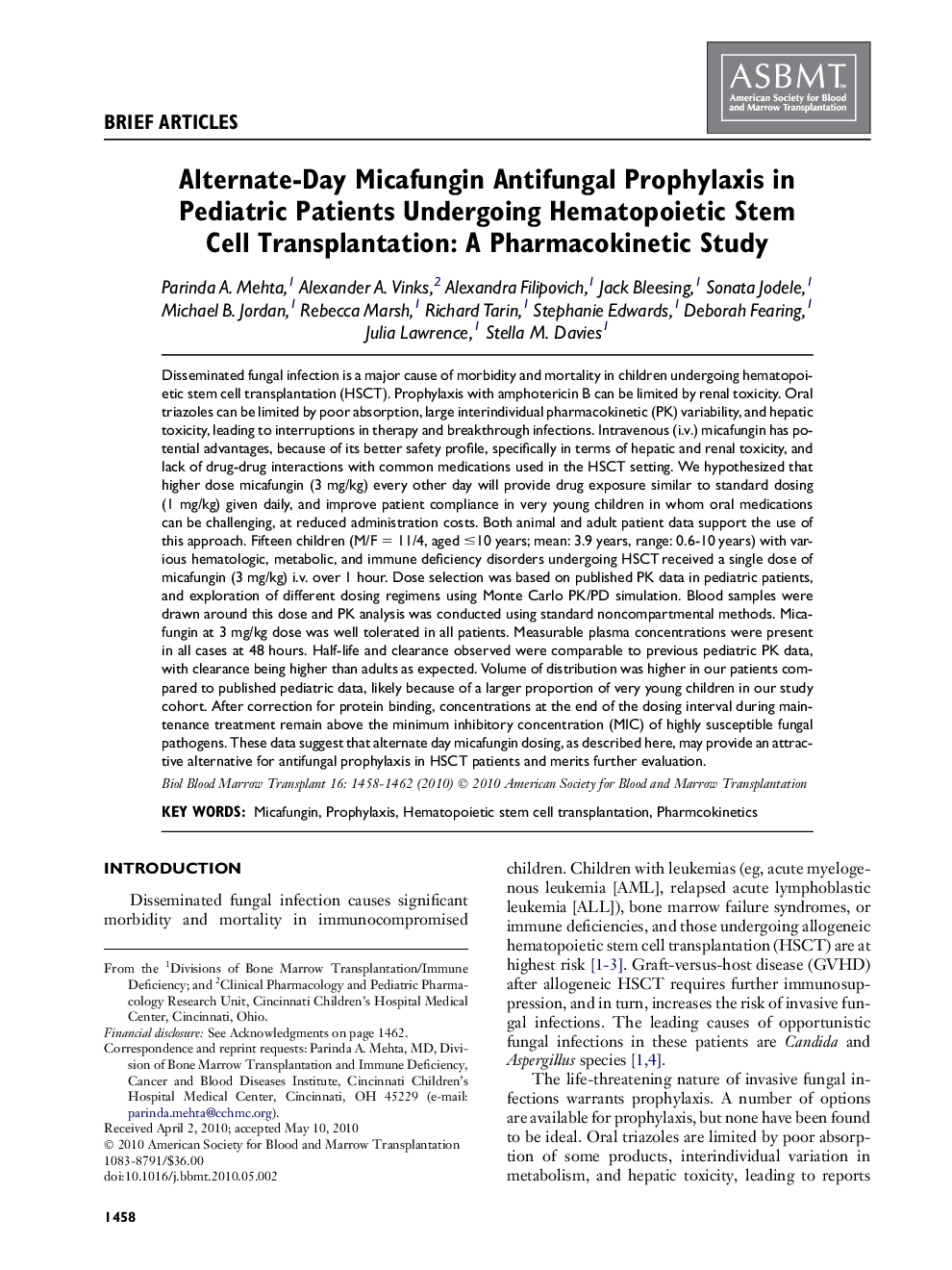| Article ID | Journal | Published Year | Pages | File Type |
|---|---|---|---|---|
| 2103789 | Biology of Blood and Marrow Transplantation | 2010 | 5 Pages |
Disseminated fungal infection is a major cause of morbidity and mortality in children undergoing hematopoietic stem cell transplantation (HSCT). Prophylaxis with amphotericin B can be limited by renal toxicity. Oral triazoles can be limited by poor absorption, large interindividual pharmacokinetic (PK) variability, and hepatic toxicity, leading to interruptions in therapy and breakthrough infections. Intravenous (i.v.) micafungin has potential advantages, because of its better safety profile, specifically in terms of hepatic and renal toxicity, and lack of drug-drug interactions with common medications used in the HSCT setting. We hypothesized that higher dose micafungin (3 mg/kg) every other day will provide drug exposure similar to standard dosing (1 mg/kg) given daily, and improve patient compliance in very young children in whom oral medications can be challenging, at reduced administration costs. Both animal and adult patient data support the use of this approach. Fifteen children (M/F = 11/4, aged ≤10 years; mean: 3.9 years, range: 0.6-10 years) with various hematologic, metabolic, and immune deficiency disorders undergoing HSCT received a single dose of micafungin (3 mg/kg) i.v. over 1 hour. Dose selection was based on published PK data in pediatric patients, and exploration of different dosing regimens using Monte Carlo PK/PD simulation. Blood samples were drawn around this dose and PK analysis was conducted using standard noncompartmental methods. Micafungin at 3 mg/kg dose was well tolerated in all patients. Measurable plasma concentrations were present in all cases at 48 hours. Half-life and clearance observed were comparable to previous pediatric PK data, with clearance being higher than adults as expected. Volume of distribution was higher in our patients compared to published pediatric data, likely because of a larger proportion of very young children in our study cohort. After correction for protein binding, concentrations at the end of the dosing interval during maintenance treatment remain above the minimum inhibitory concentration (MIC) of highly susceptible fungal pathogens. These data suggest that alternate day micafungin dosing, as described here, may provide an attractive alternative for antifungal prophylaxis in HSCT patients and merits further evaluation.
